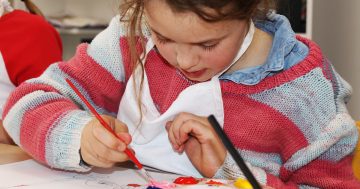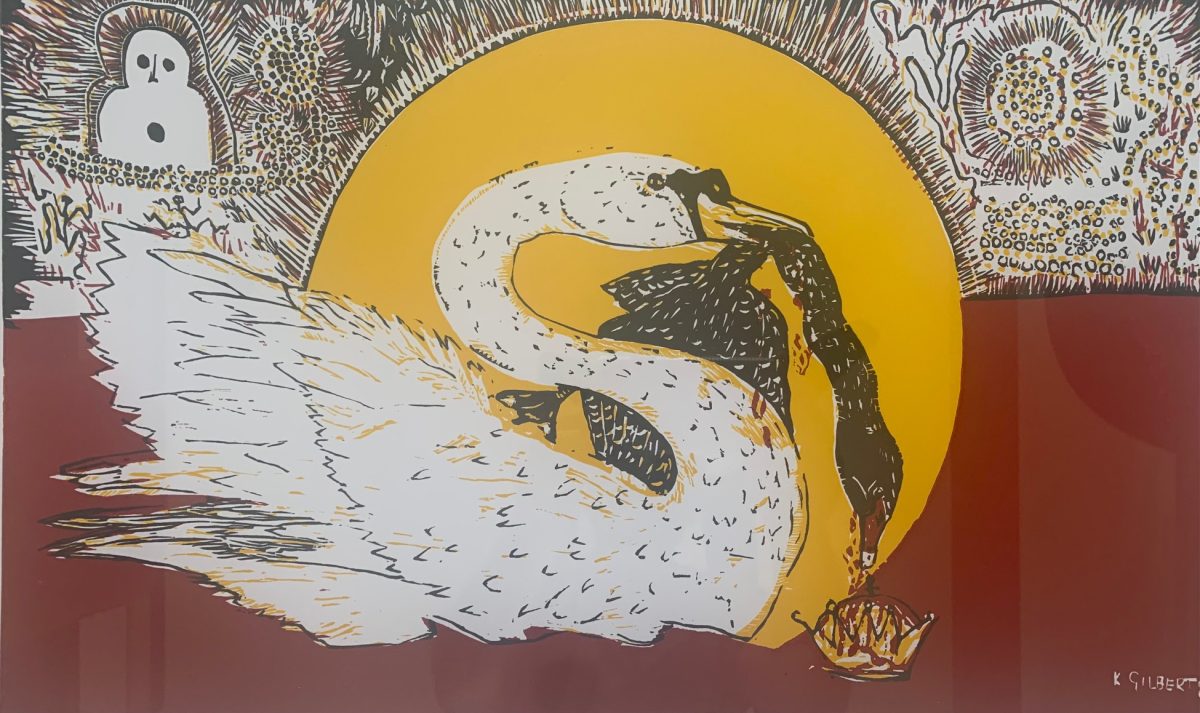
Kevin Gilbert’s Colonising Species, 1989, linocut. Image: Basil Hall.
For a brief period, between the late 1970s and the mid-1990s, Canberra could lay claim as the national capital for printmaking in Australia.
In the late 1970s, three brilliant, continentally trained printmakers were appointed to the staff of the Canberra School of Art – Petr Herel from Czechoslovakia, and Jörg Schmeisser and Udo Sellbach from Germany.
Prior to this, printmakers in Canberra, like Gillian Mann and those working around Alec Bolton at Brindabella Press, did make prints, some of a very high order, but they were toiling in the wilderness.
Sellbach, a printmaker and director of the Canberra School of Art, was determined to turn Canberra into a centre for graphic arts. Apart from appointing Herel and Schmeisser, he also facilitated the appointment of staff and numerous technical assistants to teach typography and papermaking.
Canberra became the place to be if you wanted to become a printmaker. The school attracted some brilliant students and had a steady flow of visiting guest printmakers with national and international reputations.
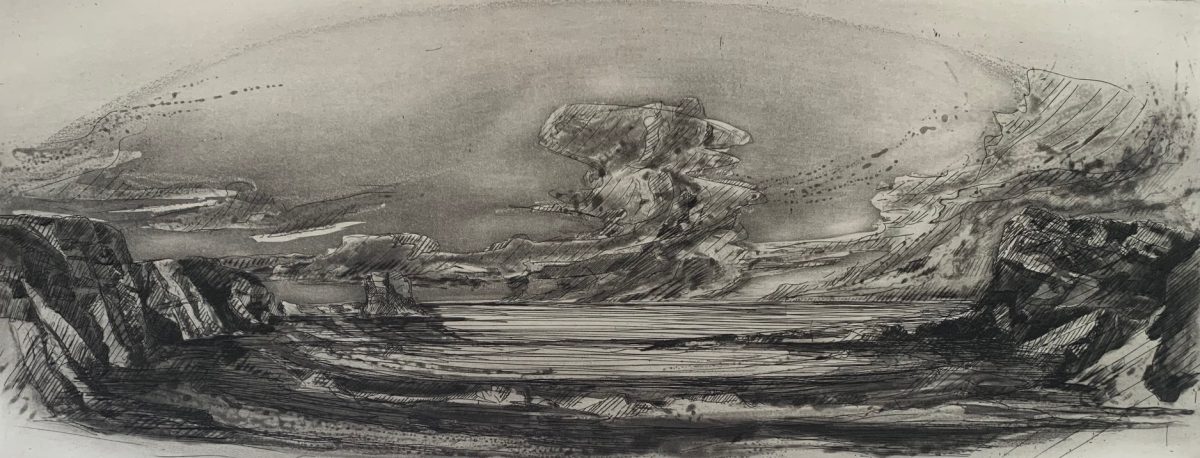
Steam and Speed etching by Mandy Martin, APM Rain, 1990. Image: Basil Hall.
Simultaneously, James Mollison, director of the Australian National Gallery and an amateur printmaker himself, appointed Pat Gilmour and Roger Butler as heads of the international and Australian departments of prints and illustrated books and started to aggressively collect prints. Soon, Canberra had the finest collections of modern and contemporary prints in the country.
Dianne Fogwell, who initially trained under Schmeisser and then went on to teach under Herel, joined forces with another printmaker, the late Meg Buchanan, who had studied under S.W Hayter at Atelier 17 in Paris and then under Hayter’s disciple Krishna Reddy in New York, to found Studio One in October 1982.
Studio One was an open-access printmaking workshop that attracted printmakers graduating from the art school and others to make their own work. It also ran classes in different types of printmaking and served as an editioning workshop, where prints could be made for high-profile artists who were not primarily printmakers.
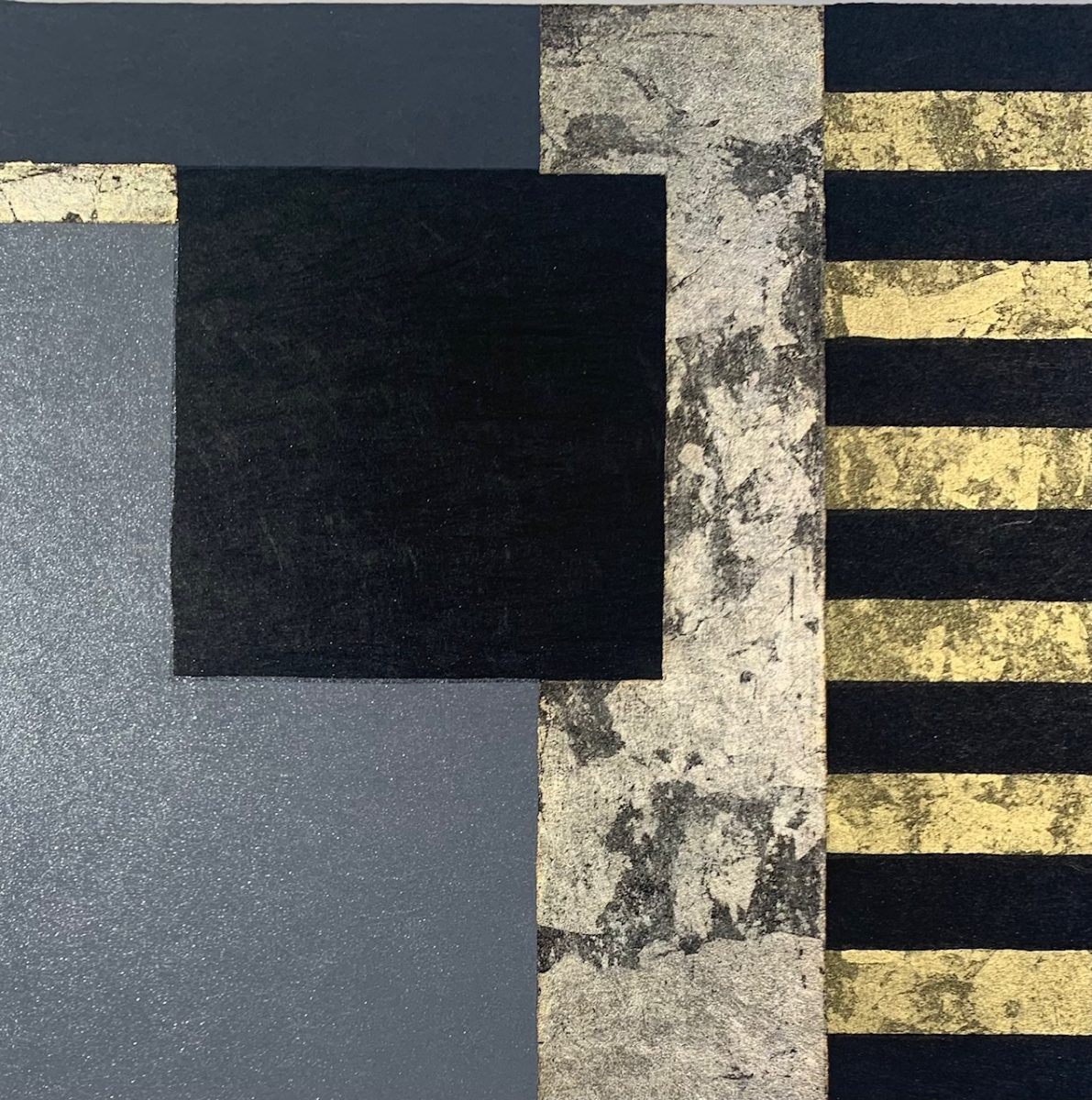
Window of Thought by Roslyn Kean, 2000 Japanese woodblock. Image: Basil Hall.
At the end of 1985, Studio One became an Incorporated Association and the partnership between Fogwell and Buchanan ended. Buchanan established her own editioning press, and by 1987, the young Basil Hall, a graduate in printmaking under Schmeisser, came to work at Studio One and subsequently, as director, steered Studio One until he left in mid-1996.
In 2000, Studio One was absorbed into Megalo, a screenprint collective established in Canberra in 1980.
The Prints from Studio One exhibition is a selection of 111 prints made at Studio One between 1987 and 1996 when Hall worked there. They come almost exclusively from Hall’s private collection of printer proofs and prints given to him by various artists at the studio.
The rollcall of names is impressive and includes Mandy Martin, Jörg Schmeisser, Roslyn Kean, Judy Watson, George Gittoes, Raymond Arnold, Garry Shead, GW Bot, Chris Denton, Dianne Fogwell, Meg Buchanan, Julie Bradley, Tanya Myshkin, Sylvia Convey, Tony Convey, Kevin Gilbert, Jan Hogan, Richard Whiteley, Bernard Hardy, Theo Tremblay, John Pratt, Milan Milojevic, Wendy Stavrianos, Annie Franklin, Jacqui Driver, Ruth Waller, Arone Meeks, Treahna Hamm, Michael Taylor, Gary Shinfield, Andrew Sibley and Janenne Eaton.
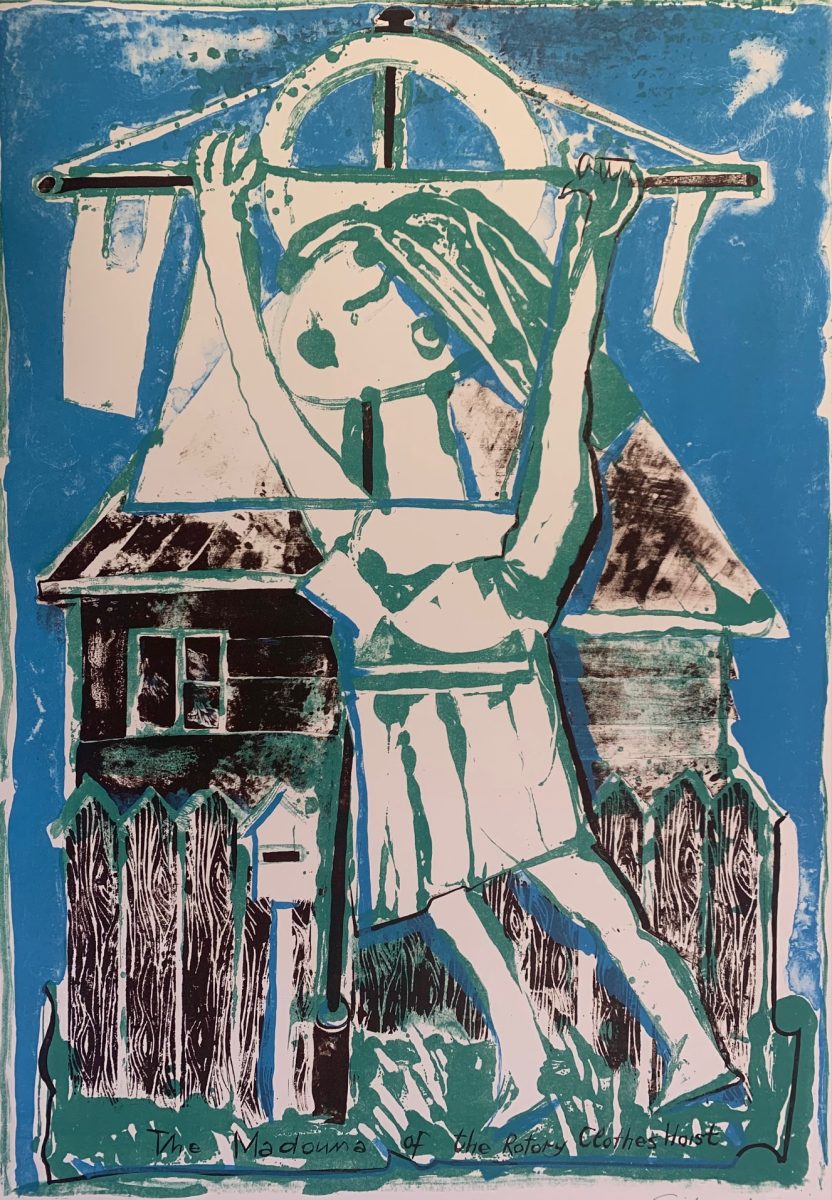
Andrew Sibley’s Madonna of the Clothes Hoist is a 1994 lithograph. Image: Basil Hall
The exhibition is crowded, with part of it stretching into the corridor. The work is of uneven quality: some of it brilliant, such as that by Martin, Watson, Kean and Eaton; some forgettable.
There is a mixture of nostalgia and sadness with a number of exhibitors no longer with us, including Meeks, Gilbert, Sellbach, Schmeisser, Sibley, Martin, Buchanan, Lesbia Thorpe and Pamela Challis.
However, it captures something of the excitement of the Canberra art scene of the 1980s and early 1990s when Australia looked to Canberra for the most significant developments in printmaking.
Why did Canberra lose its status as the printmaking capital in the 1990s?
The reasons are complex – in part, it was a case of cultural exhaustion. Key players left Canberra, including Sellbach, Herel, Mollison, Gilmour, Tremblay, and Hall.
Funding constraints led to cutbacks at the art school and Canberra commercial art galleries that handled prints. Gallery Huntly, aGOG, Criterion, Ben Grady, Abraxas, Bolitho, Giles Street Gallery and Spiral Arm Gallery ceased to exist. Studio One also closed its doors by 2000.
The Prints from Studio One exhibition revisits a time when Canberra was the printmaking capital of Australia, attracting the best artistic talent, and was leading Australia in edition printing and dissemination of Aboriginal and Torres Strait Islander printmaking.
Prints from Studio One, 1987-1996: from the collection of Basil Hall is at the Tuggeranong Arts Centre, 137 Reed Street, Greenway Tuggeranong until 28 March, Tuesday to Friday from 10 am to 5 pm, Saturday 10 am to 4 pm.
Original Article published by Sasha Grishin on Riotact.


